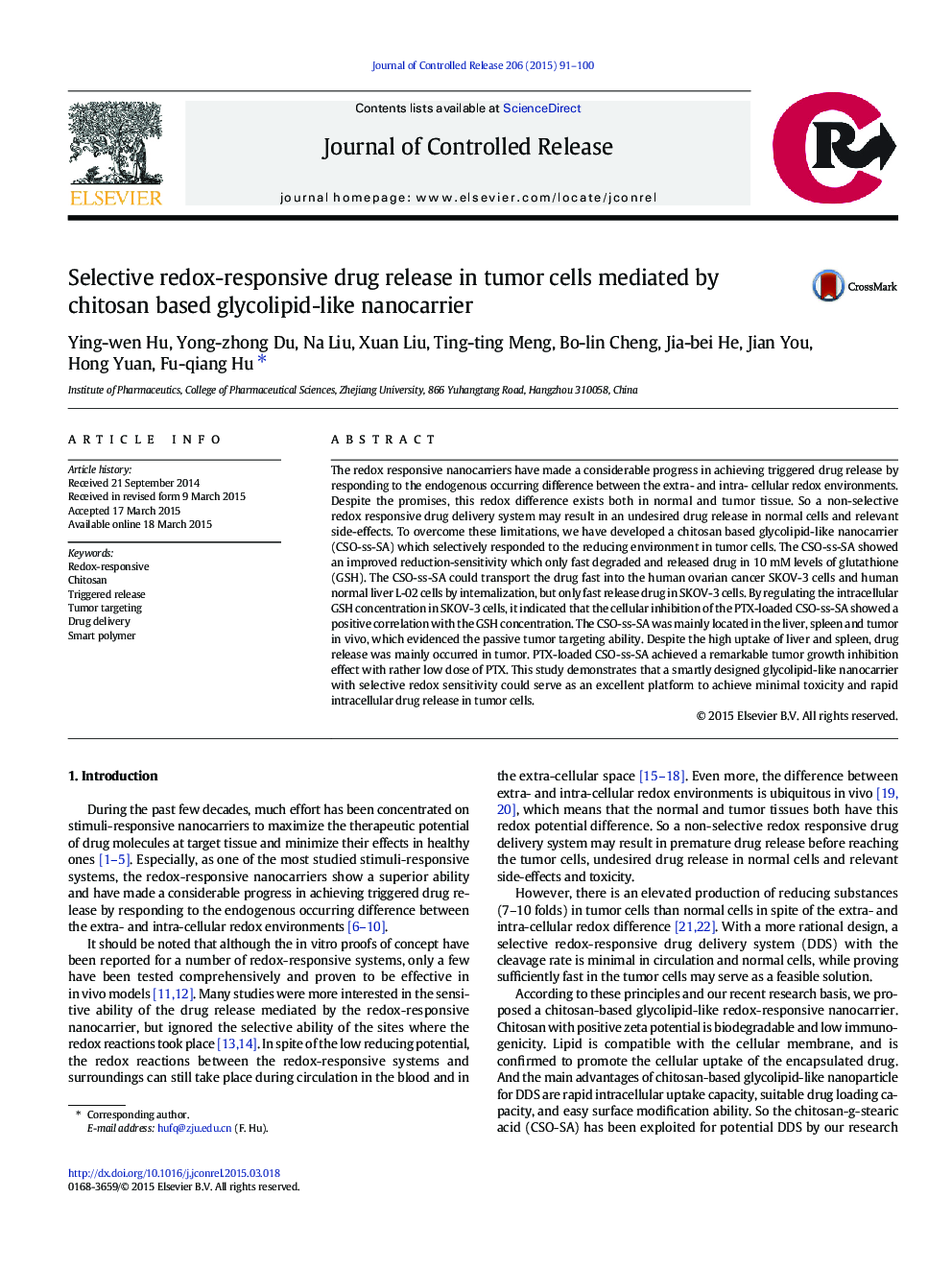| Article ID | Journal | Published Year | Pages | File Type |
|---|---|---|---|---|
| 1423805 | Journal of Controlled Release | 2015 | 10 Pages |
The redox responsive nanocarriers have made a considerable progress in achieving triggered drug release by responding to the endogenous occurring difference between the extra- and intra- cellular redox environments. Despite the promises, this redox difference exists both in normal and tumor tissue. So a non-selective redox responsive drug delivery system may result in an undesired drug release in normal cells and relevant side-effects. To overcome these limitations, we have developed a chitosan based glycolipid-like nanocarrier (CSO-ss-SA) which selectively responded to the reducing environment in tumor cells. The CSO-ss-SA showed an improved reduction-sensitivity which only fast degraded and released drug in 10 mM levels of glutathione (GSH). The CSO-ss-SA could transport the drug fast into the human ovarian cancer SKOV-3 cells and human normal liver L-02 cells by internalization, but only fast release drug in SKOV-3 cells. By regulating the intracellular GSH concentration in SKOV-3 cells, it indicated that the cellular inhibition of the PTX-loaded CSO-ss-SA showed a positive correlation with the GSH concentration. The CSO-ss-SA was mainly located in the liver, spleen and tumor in vivo, which evidenced the passive tumor targeting ability. Despite the high uptake of liver and spleen, drug release was mainly occurred in tumor. PTX-loaded CSO-ss-SA achieved a remarkable tumor growth inhibition effect with rather low dose of PTX. This study demonstrates that a smartly designed glycolipid-like nanocarrier with selective redox sensitivity could serve as an excellent platform to achieve minimal toxicity and rapid intracellular drug release in tumor cells.
Graphical abstractBased on the redox difference of intra-/extra- and tumor/normal cells, a chitosan based glycolipid-like nanocarrier (CSO-ss-SA) which selectively degrades and releases drugs in the reducing environment of tumor cells is developed.Figure optionsDownload full-size imageDownload high-quality image (141 K)Download as PowerPoint slide
